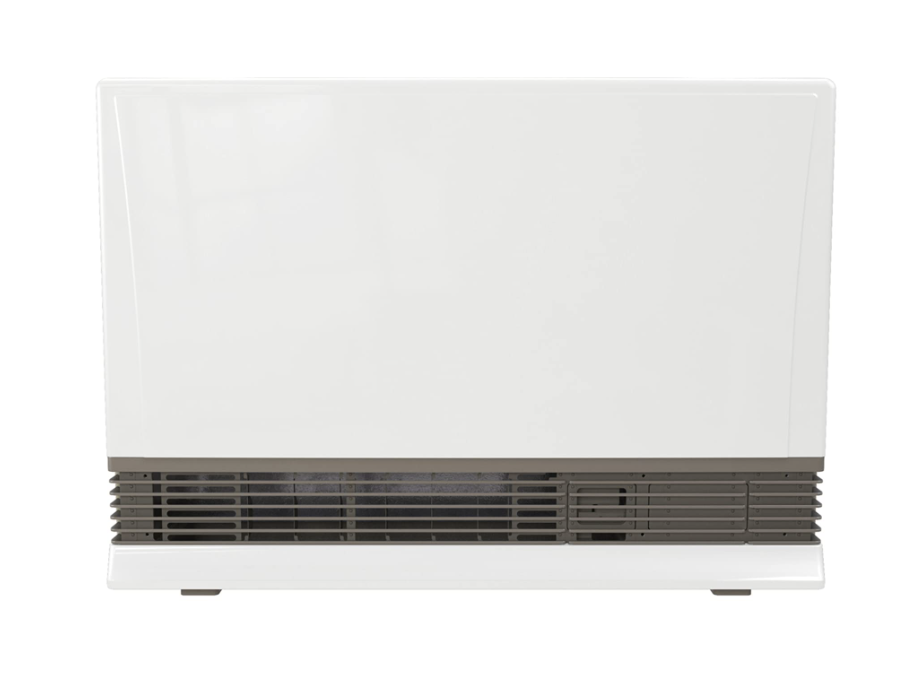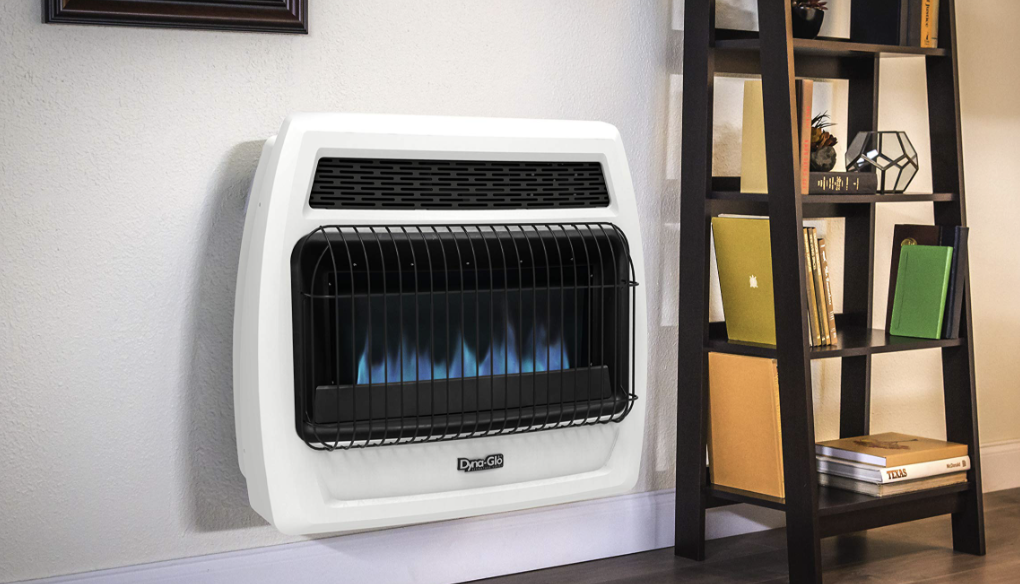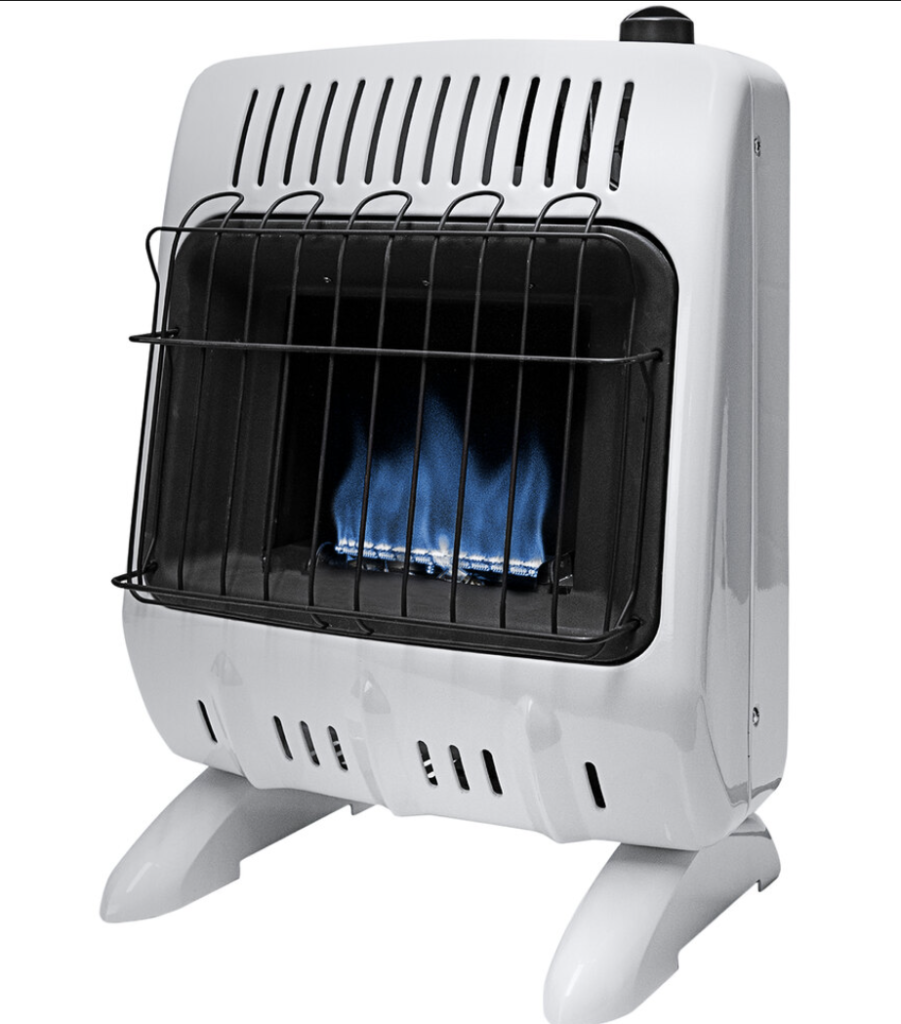Best natural gas heater.
Natural gas heaters have become popular as effective and adaptable heating options for homes, meeting a variety of heating requirements. T
hese cutting-edge appliances use natural gas that burns cleanly to generate dependable heat that is cozy in the winter.
However,if you are looking for more portable heating solutions, you may want to consider Portable gas heater.Four noteworthy examples from the range of natural gas heating alternatives demonstrate the utility and versatility of this heating category
The RINNAI EX38DTWN model of gas furnaces serve as an example of a central heating system that effectively transforms natural gas into warm air that is then dispersed uniformly throughout residences via ducts and vents.
These furnaces are excellent for preserving a constant indoor climate and have cutting-edge technologies that improve energy economy and temperature management.
Gas wall heaters, such the DYNA-G10 BFSS30 NGT-4N, provide a practical answer for individuals looking for spot heating options. These heaters, which are mounted on walls, efficiently warm smaller areas or particular rooms by supplying direct heat where it is required without the use of massive ducting.
Furthermore, gas patio heaters like the Hiland HLD S01-CGT type take center stage, ensuring that outdoor comfort is not neglected. With the help of these heaters, you may continue to enjoy being outside in the cooler evenings.
They are ideal for designing warm outdoor settings because they come in a variety of shapes and sizes.
Finally, a portable heating option is provided by Gas Space Heaters like the Mr. Heater F299831 model. These heaters are flexible and can be used to heat spaces or rooms, making them appropriate for a range of settings.
This article we explore the unique characteristics and uses of these Natural gas heaters models, emphasizing their ability to provide effective and scalable heating solutions for a variety of environments.
1.RINNAI EX38DTWN.

An essential component of energy-efficient home heating are gas furnaces. These systems use natural gas to create warm air, which is then circulated through ducts to keep rooms at a comfortable temperature.
Gas furnaces are a popular option for central heating systems because of their cutting-edge features and adjustable capacity, which provide dependable warmth and energy savings thus making it appear among the best Natural gas heaters.
Key Features
High Efficiency (AFUE Ratings)
The Annual Fuel Utilization Efficiency (AFUE) ratings for gas furnaces are high. AFUE rates a furnace’s efficiency in converting gas fuel into heat.
Better energy efficiency and cost savings are indicated by higher AFUE ratings. Maximizing heat generation while reducing energy waste is ensured by efficient gas combustion.
Variable-Speed Blower Motors
Depending on the amount of heat needed, gas furnaces with variable-speed blower motors can alter their working speed. This improves the temperature dispersion, the airflow consistency, and the energy economy.
When there is a milder need for heating, blower speeds are reduced, which saves energy and lowers noise levels.
Two-Stage or Modulating Burners
Two-stage or modulating burners offer several amounts of heat output to provide flexible heating. Two-stage and modulating burners can run at reduced outputs for a longer amount of time than single-stage burners, which can only operate at full capacity or when switched off.
As a result, temperature swings are reduced, energy efficiency is increased, and temperature changes are made more gradually.
Programmable Thermostat Compatibility
Due to the compatibility of gas furnaces with programmable thermostats, homeowners can create customized heating schedules.
When heating is not required, programmable thermostats allow for exact temperature adjustments throughout the day, which saves energy and keeps people comfortable.
Safety Features (Automatic Shut-Off and Flame Sensors)
Gas furnaces have safety mechanisms to guard against potential risks. Automatic shut-off systems ensure that the system shuts off before any risks develop by activating if a fault or irregularity is found.
In order to improve safety and stop unburned gas from entering the living area, flame sensors monitor correct ignition and combustion.
Zoned Heating, Noise Reduction, and Air Filtration Options
Advanced features like zoned heating, which allows for variable temperature settings for particular zones, are available with some gas furnaces.
Technology for noise reduction reduces operational noise, improving comfort. By removing allergens and pollutants, air filtration alternatives, such as HEPA filters, improve indoor air quality and create a healthier living environment.
Pros
- Efficient warmth with clean-burning natural gas, leading to cost savings.
- Advanced features like variable-speed blower motors and two-stage/modulating burners enhance comfort and energy efficiency.
- Compatibility with programmable thermostats allows customized heating schedules, reducing energy waste.
- Quick heating, making them suitable for colder climates.
Cons
- Requires access to a natural gas supply, limiting availability in some areas.
- Higher initial installation costs compared to electric systems.
- Regular maintenance needed for safety and optimal performance.
Pricing
A gas furnace’s price might vary depending on the brand, model, features, efficiency ratings, and installation needs.
High-efficiency and more sophisticated models can cost anywhere from $3,000 to $6,000 or more, while entry-level models can start at around $1,000 to $2,500. Installation is a separate expense that might vary greatly based on the complexity of the installation and local labor rates.
To ascertain the precise expenses for your needs and location, it is advised to get many quotes from licensed HVAC technicians.
2.DYNA-GIO BFSS30NGT-4N.

Gas wall heaters offer homes and other buildings targeted warmth and effective heating options. These little appliances can be installed on walls and supply direct heat to particular locations without the use of elaborate ductwork.
Gas wall heaters are a great option for spot or supplemental heating since they are flexible and convenient.
Key Features
- Direct Heating: Mounted on walls, these heaters provide focused warmth to specific areas, ideal for supplementary heating.
- Efficiency: Gas wall heaters offer efficient heating by utilizing clean-burning natural gas.
- Compact Design: Their space-saving design makes them suitable for smaller rooms or areas where space is limited.
- Installation Flexibility: Easy installation due to wall-mounting, without the need for extensive ductwork.
- Thermostat Controls: Many models come with thermostat controls for precise temperature regulation.
- Safety Features: Built-in safety measures, such as automatic shut-off and oxygen depletion sensors, ensure secure operation.
- Venting Options: Vented and ventless options available, providing installation versatility.
- No Electricity Dependency: Operates independently of electricity, ensuring functionality during power outages.
- Quiet Operation: Generally operates quietly, making them suitable for various settings without causing disturbances.
Pros
- Efficient Heating: Utilizes natural gas for cost-effective and efficient warmth.
- Targeted Heating: Directly warms specific areas without extensive ductwork.
- Space-Saving: Compact design suits smaller rooms or areas with limited space.
- Installation Ease: Simple wall-mounting reduces installation complexity.
- Thermostat Control: Many models offer adjustable temperature settings.
- Venting Options: Vented or ventless choices provide installation flexibility.
Cons
- Limited Coverage: Suitable for smaller spaces, may not provide whole-house heating.
- Ventilation Concerns: Ventless models can potentially impact indoor air quality.
- Aesthetic Consideration: Wall mounting might not suit all interior designs.
- Maintenance: Requires periodic maintenance to ensure safe and efficient operation.
- Dependency on Gas Supply: Availability of natural gas is necessary for operation.
- Noise Levels: Some units can produce operational noise.
- Safety Measures: Ventless models need oxygen depletion sensors for safety.
Pricing
A gas wall heater’s price varies depending on the brand, model, heating capacity, and other features. Basic models might cost anything between $100 and $300.
More sophisticated and effective devices can cost anywhere from $300 to $800 or more, giving features like temperature control and safety precautions.
Costs for installation vary depending on elements like how difficult it is to mount and connect gas lines.
It is advised to speak with local suppliers and contractors for precise pricing, taking into account both the costs of the initial purchase and the installation in order to have a full picture of the investment required.
3.HSVFBF10NG – 10,000 BTU.

Portable and effective heating options are offered by gas space heaters, which supply warmth exactly where it is needed.
These adaptable appliances, which use natural gas to provide heat, can be used in a variety of indoor environments. Gas space heaters, which are perfect for spot heating, provide simplicity and versatility in controlling comfort during colder months.
Key Features
- Portability: Compact and lightweight, allowing easy movement between rooms.
- Efficient Heating: Utilizes natural gas for cost-effective and rapid warmth.
- Spot Heating: Provides direct heat to specific areas without extensive setup.
- No Electricity Dependency: Operates independently of electricity, ensuring functionality during power outages.
- Variable Models: Available in radiant, convection, and combination styles, catering to different heating preferences.
- Oxygen Depletion Sensor: Built-in safety feature shuts off the heater if oxygen levels decrease.
- Automatic Shut-Off: Equipped with mechanisms to prevent overheating and potential hazards.
- Thermostat Control: Many models offer adjustable temperature settings for personalized comfort.
- Quick Heat Distribution: Heats up quickly, providing immediate warmth in targeted spaces.
- Venting Options: Some models require venting, while others are ventless for flexible installation.
Pros
- Portability: Lightweight design allows easy movement and placement.
- Efficient Heating: Utilizes natural gas for cost-effective warmth.
- Spot Heating: Directly warms specific areas, reducing energy waste.
- Independence from Electricity: Operates without relying on electricity, suitable during outages.
- Quick Heating: Rapidly generates heat for immediate comfort.
- Thermostat Control: Adjustable temperature settings enable personalized warmth.
- Safety Features: Oxygen depletion sensor and automatic shut-off prevent hazards.
Cons
- Limited Coverage: Suited for smaller spaces, not suitable for whole-house heating.
- Ventilation Concerns: Ventless models can affect indoor air quality.
- Safety Risks: Requires proper ventilation and awareness of potential gas leaks.
- Noise Levels: Some models can produce operational noise.
- Installation Requirements: Venting models need proper installation for safety.
- Maintenance: Regular upkeep is necessary for safe and efficient operation.
- Gas Supply Dependency: Access to natural gas is essential for functioning.
Pricing
A gas space heater’s price varies depending on the brand, model, heating capacity, and other features. Basic models, which offer straightforward heating solutions, can range in price from $50 to $150.
The price range for more sophisticated and effective systems with thermostat controls and safety measures is typically $150 to $400.
Generally speaking, installation expenses are low because of their portability. However, additional installation costs may be paid for vented variants.
To estimate the total expenditure needed, it is advisable to speak with local suppliers and take into account both the cost of the initial purchase and any prospective installation expenses.
4.HILAND-HLD S01-CGT.

Gas patio heaters provide heat to outside areas, converting chilly gatherings into cozier occasions. These heaters exude cozy heat using natural gas, increasing the time that outdoor spaces can be used.
Gas patio heaters, which come in a variety of styles and dimensions, make the outdoors a comfortable place for entertaining and relaxing.
Key Features
- Outdoor Comfort: Designed to provide warmth and extend outdoor enjoyment.
- Natural Gas Fuel: Utilizes clean-burning natural gas for efficient heating.
- Radiant Heat: Emits radiant heat, warming people and objects directly.
- Various Designs: Available in mushroom, pyramid, and other styles, enhancing outdoor aesthetics.
- Adjustable Heat Settings: Many models offer adjustable heat levels for personalized comfort.
- Easy Ignition: Equipped with easy-to-use ignition systems for quick start-up.
- Sturdy Construction: Built with durable materials to withstand outdoor conditions.
- Safety Mechanisms: Include tilt and tip-over safety switches for secure operation.
- Coverage Area: Provides warmth to specific areas, extending outdoor usability.
- Convenient Operation: Minimal maintenance and hassle-free operation for outdoor gatherings.
Pros
- Outdoor Comfort: Extends outdoor usability during cooler seasons.
- Efficient Heating: Utilizes natural gas for effective and consistent warmth.
- Direct Heat: Radiates radiant heat, warming people and objects directly.
- Various Designs: Available in diverse styles, enhancing outdoor aesthetics.
- Adjustable Heat: Allows personalized heat settings for optimal comfort.
- Quick Ignition: Easy-to-use ignition systems ensure hassle-free start-up.
- Durable Build: Constructed with robust materials to withstand outdoor conditions.
- Safety Features: Equipped with tilt and tip-over switches for secure operation.
Cons
- Fuel Dependency: Requires access to natural gas supply.
- Limited Area: Heats specific zones, might not cover entire outdoor space.
- Installation: Requires proper assembly and positioning for safe use.
- Initial Cost: Some models can be relatively expensive to purchase.
- Maintenance: Regular upkeep is necessary for safety and efficient performance.
- Aesthetic Fit: Design might not align with all outdoor decor styles.
- Ventilation: Ventless models might impact outdoor air quality.
- Noise: Some units can produce operational noise during use.
Pricing
A gas patio heater’s price varies depending on the model, brand, heating capacity, and extra features. Basic variants, which offer practical outdoor warmth, may be found for about $100 and $300.
More fashionable and effective units with programmable heat settings and high-quality materials might cost anywhere from $300 to $800 or more.
Generally speaking, installation expenses are low because of their portability. However, additional installation costs could be paid for permanent setups or vented models.
A thorough understanding of the required investment is provided by consulting local suppliers and taking into account both the original purchase price and potential installation fees.
Conclusion
In summary, the world of gas heaters presents itself as a universe of effective and adaptable solutions for a variety of heating demands.
Gas furnaces are solid central heating alternatives because of their ability to transform natural gas into a warm interior environment.
They offer a variety of features, including safety measures and variable-speed blower motors, and they represent effectiveness, individualization, and security.
Gas wall heater are an excellent example of the adaptability of localized warmth because they may target particular regions without being constrained by lengthy ductwork.
Gas space heaters, on the other hand, push the boundaries of portability by offering powerful yet portable heating options for a variety of environments.
These heaters offer a variety of designs and fuel choices, including radiant and convection, for individualized comfort.
By providing the warmth needed to prolong outdoor gatherings, gas patio heaters redefine outdoor enjoyment.
Their styles range from traditional to modern, boosting aesthetics and radiating heat. While solar heaters improve the outdoor experience, upkeep and aesthetic alignment are important factors.
Natural gas heaters come in a variety of price points, which are influenced by things like efficiency, functionality, and installation difficulty.
It’s important to comprehend the investment, including the cost of the initial purchase and any prospective installation charges.
By embracing these perceptions, potential customers will be more equipped to traverse the gas heater market and make decisions that are in line with their preferences for comfort, efficiency, and style.
The variety of gas heaters may meet a wide range of different heating requirements, whether you’re looking for centralized warmth, localized coziness, or to extend your outdoor living space.

